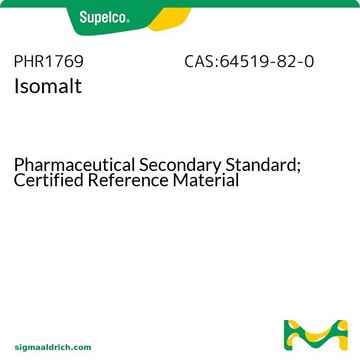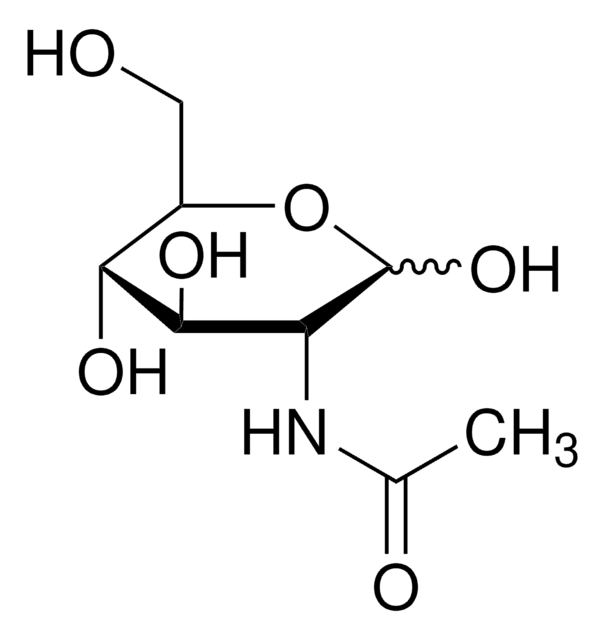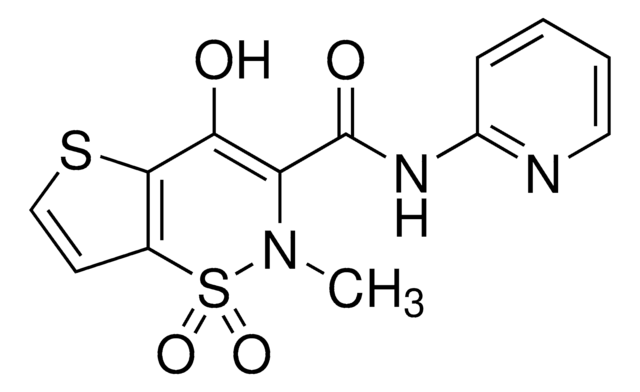SML2362
WRR139
≥98% (HPLC)
Synonym(s):
(S,E)-N-Isopentyl-4-phenyl-2-(3-tosylacrylamido)butanamide
Sign Into View Organizational & Contract Pricing
All Photos(1)
About This Item
Empirical Formula (Hill Notation):
C25H32N2O4S
CAS Number:
Molecular Weight:
456.60
UNSPSC Code:
12352200
NACRES:
NA.77
Recommended Products
Assay
≥98% (HPLC)
form
powder
color
white to beige
solubility
DMSO: 2 mg/mL, clear
storage temp.
2-8°C
Biochem/physiol Actions
WRR139 is a peptidyl vinyl sulfone that inhibits NGLY1 (N-glycanase 1; PNGase; Peptide-N(4)-(N-acetyl-beta-glucosaminyl)asparagine amidase) de-N-glycosylation activity in cell-free enzymatic assays (IC50 <10 μM; 3.75 rhNGLY1 wtih 1.7 μg S-alkylated RNase B as substrate) and in cultures (IC50 = 5.5 μM in ddVenus reporter K562 cells co-treated with 1 μM proteasome inhibitor carfilzomib). WRR139 disrupts NGLY1-mediated nuclear respiratory factor 1 (NRF1) processing/activation. WRR139 (1 μM) is shown to potentiate the cytotoxicity of proteasome inhibitor carfilzomib (1-100 nM) in multiple myeloma (MM; U266 & H929), T-cell acute lymphoblastic leukemia (T-ALL; Jurkat), and HeLa cultures, but not in NGLY1-knockdown HeLa cells. Note: concentrations below 10 μM is generally recommended for culture treatment to avoid off-target activity against caspases.
Storage Class Code
11 - Combustible Solids
WGK
WGK 3
Flash Point(F)
Not applicable
Flash Point(C)
Not applicable
Choose from one of the most recent versions:
Certificates of Analysis (COA)
Lot/Batch Number
Sorry, we don't have COAs for this product available online at this time.
If you need assistance, please contact Customer Support.
Already Own This Product?
Find documentation for the products that you have recently purchased in the Document Library.
Frederick M Tomlin et al.
ACS central science, 3(11), 1143-1155 (2017-12-05)
Proteasome inhibitors are used to treat blood cancers such as multiple myeloma (MM) and mantle cell lymphoma. The efficacy of these drugs is frequently undermined by acquired resistance. One mechanism of proteasome inhibitor resistance may involve the transcription factor Nuclear
Our team of scientists has experience in all areas of research including Life Science, Material Science, Chemical Synthesis, Chromatography, Analytical and many others.
Contact Technical Service







